Showing posts with label Dominican Food. Show all posts
Showing posts with label Dominican Food. Show all posts
Fried Green Plantains, TOSTONES
TOSTONES are FRIED GREEN PLANTAINS, the preferred side dish in many Latin American kitchens. This is how I most like to eat the plantains. They can be served at breakfast, lunch, or dinner. It is a very popular fritter served with the "comida" at noon and for dinner.
Strangely enough, it is also sold for breakfast with fried salami or even fried chicken in the popular business called "cafeterias". I know you may be wondering, fried chicken and plantains for breakfast? Some Dominicans love this, but only if there is no mangú - mashed boiled green plantains.
About MANGU, I will write another day because I believe a separate post would be more appropriate since it is one of the dishes that represent Dominican cuisine, just like the MOFONGO is to Puerto Ricans. These recipes are cooked and very much loved in BOTH countries.
Although it is simple to make, I must confess that when I got married, I did not know how to cook tostones. If you don't know the correct steps, your results can be a total failure. They can come out very hard, too greasy, or even raw. All of these mentioned happened to me. Therefore, if my advice helps you achieve great, crispy, and well-done fried plantains, then I'll be very happy and could go BAKE in peace.
To my sweet little ones at home and the apprentices who follow this blog, you will no longer have excuses for not knowing how to make these. The steps are VERY EASY; the most difficult part is to peel the plantain, but I still guarantee you could make these... it is a piece of cake, TRUST ME!!
Many people add water with garlic, but I don't because I find this makes them soggy. At home we like them to be a little crispy not oily. My daughters love them with ketchup, and I am almost sure that in many of your homes is the same.
Tostones, Fried Greens Plantains or Patacones
The preferred side dish in many Latin American kitchens.
Ingredients:
Green Plantains (one plantain yields 5-6 tostones)
enough oil for deep frying
salt
Instructions:
1. Peel and cut the plantains into one-inch slices, which can be diagonal or straight.
2. First Fry: Fry the pieces in a frying pan with enough oil to cover the one-inch chunks, about 1½ -2 inches deep. The oil must be hot (350˚F); otherwise, the tostones may come out greasy. Fry until they start to turn golden in color. Drain them in a mesh basket or on a paper towel.
3. After a minute or two, not more, flatten the pieces with a tostonera. If you don't have one at hand, a wide cup or plate will do, but I do recommend getting a plantain press (tostonera).
4. Second Fry: (To be done right before serving because they will harden as they cool) Return the flattened plantains to the hot oil until they reach a golden color and are fully cooked. Remove them from the oil and drain. Sprinkle with salt and serve immediately. To enhance the taste, you can use garlic salt instead of regular salt or sprinkle them with garlic powder and salt.
Yield: 4-6 servings.
Speaking of patacones, here is an old-time video of, Johnny Ventura, one of the best merengue artist, Enjoy!
I take this opportunity to give you a peek of our banana plantation, this is what surrounds my entire house. The yellow- greenish tree trunks are the bananas (the ones we eat raw as dessert) and the ones with reddish trunks are the plantains (the cooking ones).
PAN DE MAIZ , Cornbread
Este Pan de Maíz casero, es rico y fácil de hacer. Es el complemento perfecto para asados, BBQs, chili, ensaladas y para merienda.
Esta receta también es un buen pan de maíz para usar en Cornbread Dressing.
This is an all-time favorite Cornbread , perfect side dish for baked meats, BBQs, chili, salads, and alone for snacking.
This recipe also makes a great cornbread for Cornbread Dressing.

Esta receta también es un buen pan de maíz para usar en Cornbread Dressing.
VER RECETA: AQUÍ
This is an all-time favorite Cornbread , perfect side dish for baked meats, BBQs, chili, salads, and alone for snacking.
This recipe also makes a great cornbread for Cornbread Dressing.
Sé fuerte y valiente. No teman ni se asusten ante esas naciones, porque Jehová tu Dios va contigo, nunca te dejará ni te abandonará. Deuteronomio 31:6
Shrimp Asopao, Asopao de Camarones
The Asopao is a traditional dish deeply rooted in the kitchens of the Dominican Republic and Puerto Rico. It is a delightful variation of Spanish paella. Unlike locrio, this dish has a lighter texture, similar to a thick soup. It could be called a rice stew or rice pottage and can be prepared with a wide variety of ingredients, such as chicken, lobster, and pork chops, among others.
While chicken asopao is the most popular, my personal favorites are the ones made with hen or free-range chicken, as well as the one I'm sharing with you today: shrimp asopao. Personally, I love enriching the flavor of asopao with beer, as it adds a unique richness. Despite not being a fan of alcohol, in this recipe, it evaporates during cooking, leaving behind only a delightful blend of flavors.
I encourage you to try this version when preparing this recipe at home discover the magical flavors that asopao has to offer and indulge in the comforting flavors of this traditional Dominican rice pottage. This hearty and flavorful dish is a must-try for seafood or soup lovers. Try our authentic recipe today!
Shrimp Asopao, Dominican Asopao de Camarones
The stew is a delicious and comforting dish from the Dominican Republic. It can be done with a variety of meats and seafood. In this case, I added a cup of beer to give a unique and delicious flavor. Don't forget to tag me if you do this recipe. Follow me on Instagram @MarisCakesRD.
Ingredients:
1 ½ cups rice
2 cubes fish or chicken bouillons
4 liters of hot water
2 tablespoons oil
¼ cup Dominican Sazón
1 packet of Sazon Goya with achiote or 1 teaspoon of annatto (achiote)
1 cubanelle pepper
½ cup tomato sauce or ¼ cup of tomato paste
¼ cup chopped cilantro leaves
1 cup beer
4 culantro leaves
1 cup diced auyama (pumpkin)
Salt and pepper to taste
1 Tablespoon crushed garlic (2-3 cloves)
½ cup juice of bitter orange
Instructions:
1. Shrimp Stock:
In a pot, bring 2 ½ cups of hot water (taken from the 4 liters), shrimp tails or shells (excluding the shrimps), and two cubes of fish or chicken to a boil for 10 minutes.
After boiling, turn off the heat and let it sit covered for 20 minutes to create a flavorful shrimp broth. Strain to remove shells and set broth aside.
2. Preparation:
In a large saucepan, heat 2 tablespoons of oil. Add Dominican Sazón, Goya seasoning with achiote (annatto), or 1 teaspoon of achiote (annatto), along with green pepper (quartered) and tomato paste or tomato sauce. Cook for 2 minutes.
Rinse and add the rice, mixing well. Pour in the beer and allow it to slightly evaporate (2 minutes).
Add 1 ½ cups of shrimp stock and 3 liters of hot water. Cover and cook over medium-high heat. Once it starts boiling (approximately 10 minutes), stir, and add cilantro, culantro, and pumpkin (auyama). Cover and continue cooking over low heat, stirring occasionally to prevent sticking.
3. Final Steps:
Ten minutes after adding the pumpkin, introduce garlic and orange juice. Five minutes later, add seasoned shrimp with a dash of lemon juice and the remaining cup of shrimp broth. Stir and continue cooking covered.
Cooking time is approximately 30-35 minutes from the addition of rice until it reaches a tender and open consistency, resembling a thick rice soup.
Serve immediately, pairing with tostones (fried green plantains).
Yield: 8 servings
Notes:
a) As it cools, it thickens, so aim for a slightly soupy texture.
b) I add beer because it adds a rich flavor to the asopao, but you can substitute it for ½ cup of wine. If you do use wine, don't add too much salt because wine tends to make food salty.
c) Leftovers can be reheated, but to regain the desired soupy consistency, boil water or broth separately and then add it to the leftover asopao. Adjust salt as needed.
d) The ingredients list includes 4 liters of hot water, but for the recipe, you'll use 2 ½ cups for shrimp stock and 3 liters for cooking rice. Extra water can be used if necessary.
If you liked this recipe, you may also be interested in:
Let us not become weary in doing good, for at the proper time we will reap a harvest if we do not give up. - Galatians 6:9
Dominican Johnny Cakes or Yaniqueque
The Johnny Cake, known as Yaniqueque in the Dominican Republic, is a variation of the North American Johnny Cake. While the original recipe is made with cornmeal, there are versions that combine cornmeal and wheat flour, as well as others that use only wheat flour. Some variations include additional ingredients such as shredded coconut, coconut milk, egg, honey, sugar, and salt, among others. The preparation method can be either baked or fried.
In the Dominican Republic, Yaniqueque was introduced by English-speaking Caribbeans or African descendants, who adopted it as one of their favorite dishes due to its simple preparation and low cost. The Dominican version is made by mixing wheat flour with butter, oil, and a touch of salt. Although it is generally fried, it is sometimes baked. Discover more about this delicious variant of the Johnny Cake and savor its unique flavor.
This recipe is a favorite among Dominicans and has become a craving for those living outside the country who have tried it during their vacations. Personally, it brings back memories of my trips to the Dominican Republic, especially visits to Boca Chica beach, where you can find Yaniqueques and fried fish. Although they are now sold at many roadside stalls, I insist that there is no comparison to the ones we make at home.
The recipe I share is the same one I use for empanadas and pastelitos, but it is halved as it yields enough for Johnny Cakes. Note that for pastelitos, I don't use baking powder. I hope you enjoy my version at home, bringing a piece of the authentic Dominican experience. Happy cooking!
Dominican Johnny Cakes, Yaniqueques
Ingredients:
2 cups flour (260 g)
1 tablespoon sugar
¼ teaspoon salt
1 teaspoon baking powder
¼ cup margarine (56 g)
1 egg
½ tablespoon cooking wine (8 ml)
¼ cup + 1 tbsp water (74 ml)
Oil for frying
Instructions:
1. In a bowl, mix together the flour, salt, sugar, and baking powder. Make a hole in the center of the dry ingredients.
2. Add the margarine, egg, and cooking wine to the center of the dry ingredients. Mix everything together with your hands until well blended.
3. Gradually add the water to the mixture, a little at a time, until a soft dough forms. You may not need to use all of the water. Knead the dough lightly and let it stand for at least half an hour.
4. Divide the dough into small balls, each about 1 ½ inches wide. Roll out each ball with a rolling pin on a floured surface or between sheets of waxed paper until a thin disk is formed. Use a knife to make two slits in the middle of each disk to prevent the dough from inflating while cooking.
5. Fry the disks in hot oil, turning once, until both sides are golden brown. Drain the fried disks on paper towels. If desired, sprinkle with salt, but it is not necessary.
Notes:
a) The thinner you roll out the dough, the crispier it will be. If you leave it a bit thicker, it will be soft on the inside and toasted on the outside.
b) It can be served with ketchup.
c) My favorite way to eat it is giving it an American twist, sprinkling it with powdered sugar and cinnamon – they taste delicious! This way, it reminds me of the "Fry Dough" at Canobie Lake Park in New Hampshire, although I clarify that Dominicans don't eat it this way.
If you enjoyed this recipe, you'll love:
Again, truly I tell you that if two of you on earth agree about anything they ask for, it will be done for them by my Father in heaven. - Matthew 18:19
Stewed Beef, Dominican style, Carne de Res Guisada
In the Dominican Republic, one of the most popular ways to cook beef is by making beef stew, or as we call it, carne de res guisada. This hearty dish is typically served alongside rice, salad, plantains, or yuca. For a truly authentic Dominican meal, we serve the Dominican flag, which consists of white rice, stewed beans, tostones (fried green plantains), and a fresh salad.
En español: Carne Guisada.
Stewed Beef -Dominican style
Carne de Res Guisada
Ingredients:
2 ½ pounds of beef
¼ cup of olive oil
2 tbsp of tomato paste
3-4 cups hot water
¼ cup chopped cilantro
3 tablespoons of cooking wine (optional, but recommended)
pinch of salt or to taste
For seasoning:
2 tablespoons soy sauce
2 tablespoons of Dominican Sazón, natural seasoning
1 teaspoon pepper
2 teaspoons garlic paste or 4 cloves of garlic mashed
pinch of cinnamon optional
Instructions:
1. Clean and cut the meat into 2-inch cubes.
2. Season with soy sauce, Dominican Sazón, pepper, garlic, and cinnamon; bring to the refrigerator for 1 hour (preferred, but not necessary).
3. Add olive oil to the pot, and when this reaches a hot temperature, sauté meat until it gets a dark golden color.
4. Add cilantro, cover the pot, and leave to cook over medium heat, checking constantly to add a little amount of hot water so that the meat won’t dry out. Cook until meat is tender approx. 1 hour and less if cooked in the pressure cooker.
5. When meat gets tender, Sauté with two spoons of tomato paste, add wine (wait a minute or two until the alcohol evaporates) then add 1-2 cups warm water, the amount of water depends on your taste, season with salt. When the sauce reaches the consistency desired, turn off the heat and serve.
But grow in the grace and knowledge of our Lord and Savior Jesus Christ. To him be glory both now and forever! Amen. -2 Peter 3:18
Dominican Sazón
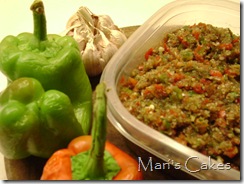
In every culinary tradition, distinctive condiments play a vital role in elevating the flavors of dishes. In Dominican cuisine, our go-to seasoning is what we affectionately refer to as 'Sazón.' This versatile blend is a staple in preparing a wide array of traditional delights, including beans, meat, rice, seafood, soups, stews, and pasta. Keeping it readily available in your kitchen can simplify cooking while contributing to a healthier dining experience.
Please note that the Sazón recipe I share here has been my trusted companion for over two decades in crafting authentic Dominican meals. Rest assured, I've yet to receive any complaints about its delicious impact! :o)
2 whole garlic heads
4 onions
5 bell or cubanelle peppers
1 cup chopped cilantro
2 chicken bouillons
¼ cup oregano
½ - 1 teaspoon allspice
2 Tablespoons Annatto (bija, achiote) or 1 tablespoon of Saffron
2 Tablespoons olives and capers
1 Tablespoon salt or to taste
¼ cup vinegar or sour orange juice
1 cup water to use only if needed
A little oil (optional)
Black Pepper to taste
Instructions:
Wash and cut all the ingredients into cubes and process until the desired consistency is achieved. In the blender, it comes out more liquid, and in the food processor, it comes out with small vegetable pieces (more chunky). If the consistency gets too thick, use small amounts of water until it continues to blend properly. It stores well for up to 2 weeks in an airtight container kept in the refrigerator.
Mode of use:
1. Season meats with or seafood with enough sazón, (use 1/4 cup for 2 LBS. or to taste) and place in the refrigerator covered for at least half an hour to marinate before cooking.
2. For all the other dishes, what we do is sauté enough seasoning to taste this process is called sofrito. To do this: in a hot saucepan place a little bit of oil and sauté the sazón, if tomato paste is used add it now. When it forms a thick sauce add it to cooked beans, in the water for cooking yellow rice, locrios or moros, soups or pasta.
Note: You can use more garlic if you like, but I prefer to process additional garlic separately with some salt and oil. I store it aside for recipes that require extra garlic, for example: steaks, beans, and soups, and for other recipes that do not require Dominican seasoning such as international meals.
Nuestro Sazón Natural (Sazón Criollo)
I dedicate this post to my mom and my sister Miriam for teaching me their cooking tips, for being excellent cooks, and for inspiring me to cook better each day.
"Silver or gold I do not have, but what I have I give you." - Acts 3:6
Text and Photos © Mari's Cakes
Mofongo (Mofongo Dominicano)
The Mofongo is delicious and easy to prepare. It is very popular in the Dominican Republic borrowed from Puerto Rico. Many restaurants serve a great variety of this dish, either accompanied by mondongo, shrimp, fried meat (salted beef) etc. The following is the traditional recipe.
,
Mofongo Dominicano con Chicharrón Recipe
Yield: Serves 8
Ingredients:
2 lbs. of pork Chicharron (crispy skin or rinds).
In the Dominican Republic, the chicharrón is pork skin and its fat in large chunks boiled in water until it becomes highly crispy.
2 ½ cups oil for frying
salt to taste
16 medium green bananas (plantains) peeled and sliced an inch thick.
6 cups of hot beef broth
2 teaspoons of slightly fried garlic in two tablespoons of oil.
Instructions:
In a pan fry plantain until they are golden on both sides. When fried sprinkle with salt and garlic.
In a mortar (for pounding) mash the fried plantains add the cooked pork rinds (chicharrón) and continue to pound until mixed completely.
Serve accompanied with beef or chicken broth and pour over mofongo, so it will be moist.
God Bless!
In a mortar (for pounding) mash the fried plantains add the cooked pork rinds (chicharrón) and continue to pound until mixed completely.
Serve accompanied with beef or chicken broth and pour over mofongo, so it will be moist.
Mofongo is a delectable dish, perfect for sharing with loved ones. This recipe is dedicated to all my friends and family residing outside the Dominican Republic, with heartfelt love.
Sopa de Pollo Dominicana
During the cold days, a hearty hen or chicken soup can be a comforting remedy for flu or for those holiday seasons when we've indulged in plenty of treats. I've always strived to recreate my mom, Nereida's delicious soup, as she is an exceptional cook. Being a fan of Dominican cuisine, I've mastered the art of cooking many traditional dishes. My cooking motto revolves around using natural ingredients such as garlic, oregano, salt, pepper, and a generous amount of cilantro.
The soup is a traditional dish and is one of the most popular in Dominican culture, consumed throughout the country. Preparing a Dominican-style chicken soup is an excellent way to enjoy the cuisine of this beautiful country.
Here's the first recipe I share in this blog for you to enjoy:
Dominican Chicken Soup (Sopa de Pollo Dominicana)
A delicious recipe for Dominican Chicken Soup. This broth can also be made with free-range chicken (Hen), taking into account that this meat will take a little longer to tenderize.
Ingredients:
• 3-pound chicken or hen
• 2 cups of auyama pumpkin cut into small cubes (divided for use)
• 2 medium carrots peeled and chopped
• 2 cups potatoes cut into cubes
• 2 plantains peeled and cut into pieces
• 2 medium yuca (cassava root) cut into pieces
• 1 medium onion chopped
• 1 cup noodles
• 2 aji gustoso (a type of chili pepper) minced
• 1 sprig of fresh rosemary
• 1 Tablespoon chopped parsley
• 1/4 cup of fresh cilantro chopped
• 3 Tablespoon of olive oil (divided for use)
• 1 tablespoon of garlic crushed
• 1/4 cup of the juice of a bitter orange or cider vinegar
• Approximately 1 gallon of boiled, hot water
• Salt and pepper to taste
Directions:
1. Begin by cleaning and cutting the chicken into small pieces. Season it with oregano, salt, pepper, garlic, peppers, onions, and cilantro. For easy seasoning, you can instead use 3 tablespoons of my Sazon Dominicano recipe.
2. In a saucepan, heat 2 tablespoons of oil. Add the seasoned chicken and sauté until it turns golden brown. Pour in 2 cups of hot water and let it simmer for 2 minutes. Then, add 1 cup of auyama (pumpkin) and let it simmer for 15 minutes. The chicken will release its own flavorful broth. For those using hen meat, adjust the amount of water and cooking time before adding the pumpkin, which may take 1-2 hours longer, and a few extra cups of water to get tender meat and a more flavorful broth.
3. In a larger pot for making the soup, heat 1 tablespoon of oil and sauté the chopped onions until they turn translucent and start to brown. Add the plantains and 2 cups of hot water, and let it simmer for about 5 minutes. Then, add the remaining auyama pumpkin, aji gustoso, potatoes, carrots, and cooked chicken with its broth. Add enough hot water to cover the vegetables and meat, ensuring an extra two inches above their level. Lastly, add the noodles when the potatoes begin to slightly soften.
4. As the broth thickens, add the parsley and rosemary. About 5-7 minutes before turning off the heat, be cautious not to overcook the potatoes and plantains, as they may become mushy, add the garlic, cilantro, bitter orange juice, and salt and pepper to taste. Remove from heat and let it sit for 5 minutes before serving!
Notes:
a) In step two, it's important to note that chicken cooks faster than other meats like hen or beef, which require more time to tenderize. When preparing Hen soup or beef soup, consider the additional time needed for these types of meats. Additionally, adding half of the auyama with the meat while it cooks contributes to achieving the desired texture and color in the broth.
b) In step four, for a quicker thickening process and enhanced visual appeal, consider removing herbs, peppers, and some of the veggies, and blending them into a thick paste to be added back into the pot. This method not only adds flavor but also helps thicken the broth.
Both of the tips shared in these notes also work when preparing the Sancocho recipe.













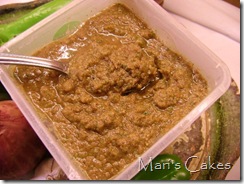
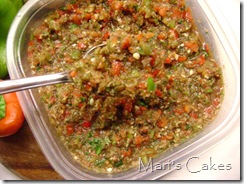
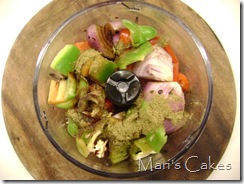
.jpg)


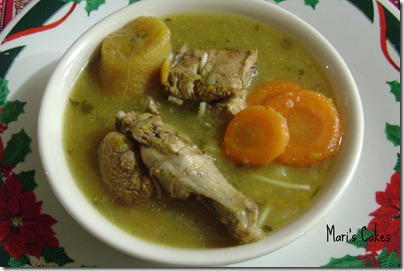

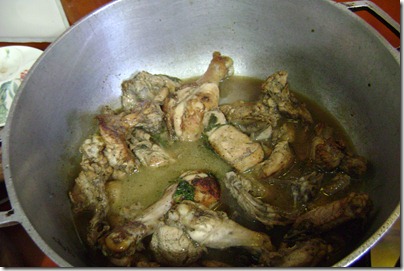

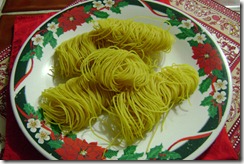
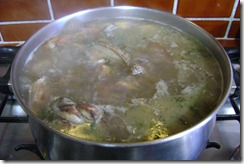
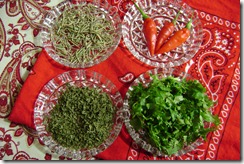
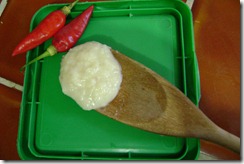


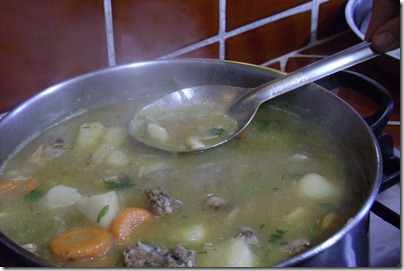
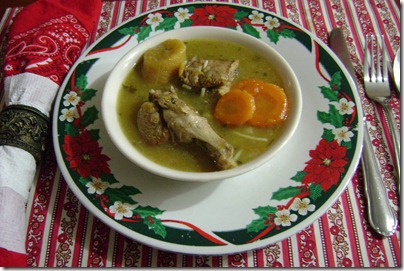



Keep in touch